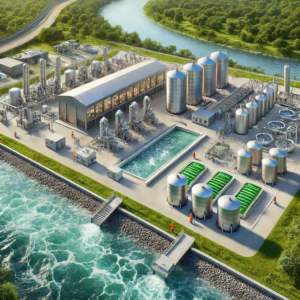 Ozone Application for Micropollutant Removal in Wastewater Treatment
Ozone Application for Micropollutant Removal in Wastewater Treatment
Modern municipal and industrial wastewater treatment plants face a growing challenge – organic micropollutants that are difficult to remove using traditional methods. Pharmaceutical residues, hormones, pesticides, and industrial chemicals enter wastewater, posing risks to water ecosystems and human health.
The Problem of Micropollutants in the Water Cycle
Many conventional wastewater treatment plants are not efficient at removing micropollutants. Substances such as pharmaceutical residues, cosmetic ingredients, flame retardants, and agricultural chemicals are not fully broken down by biological treatment processes. As a result, these pollutants can re-enter the environment through treated effluent and eventually contaminate drinking water sources.
Ozone Oxidation – An Advanced Solution
Ozone is one of the most effective methods for removing micropollutants from wastewater. It oxidizes chemical compounds, breaking them down into less harmful substances. This method ensures a higher level of purification, as ozone not only eliminates bacteria and viruses but also degrades pharmaceutical and organic pollutants.
Practical Applications and Economic Benefits
For example, an ozone oxidation system used in a wastewater treatment plant with a flow rate of 180 l/s and an ozone dosage of up to 15 mg/l can effectively remove over 90% of pharmaceutical and organic contaminants. This allows for high-quality treated water while reducing the need for chemical treatment, lowering operational costs.
Ozone is a modern, efficient, and environmentally friendly solution that helps municipalities and industries achieve higher wastewater treatment standards, reducing pollution and ensuring better water quality for future generations.